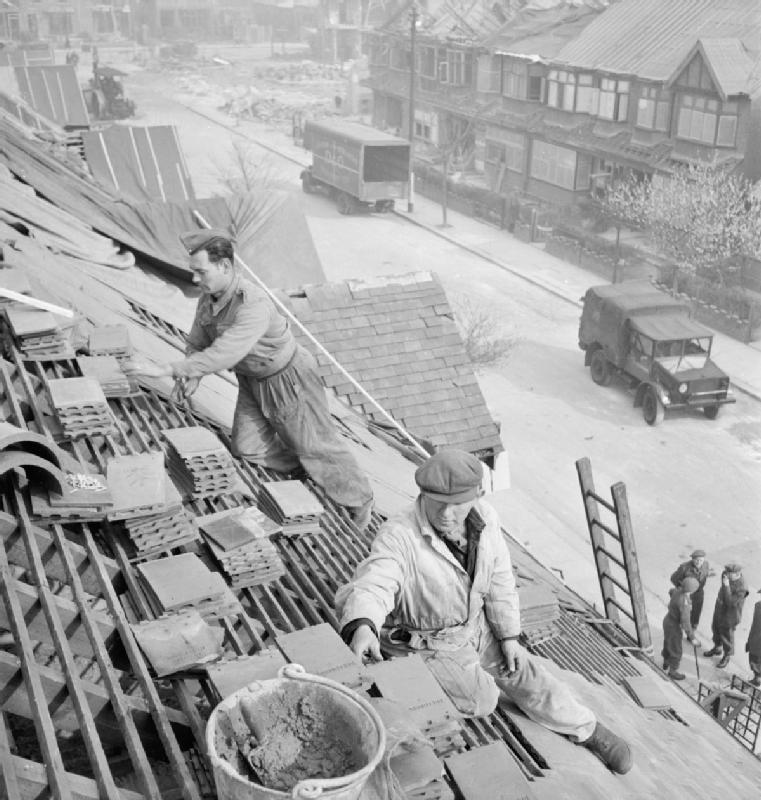‘Stop-go’ policy and the restriction of post-war British house-building
by Peter Scott (Henley Business School, University of Reading) and James T. Walker (Henley Business School, University of Reading)
This article is published in 72:2 of The Economic History Review.

Britain’s unusually high house price to income ratio plays an important role in reducing living standards and increasing “housing poverty”. This article shows that Britain’s housing shortage partly stems from deliberate long-term government policies aimed at restricting both public and private sector house-building. From the 1950s to the early 1980s, successive governments reduced housing starts as part of `stop-go’ macroeconomic policy, with major cumulative impacts.
This policy had its roots in the Second World War, when an influential coalition of Bank of England and Treasury officials pressed for a post-war policy of savage deflation, to restore sterling’s credibility and re-establish London as a major financial centre. John Maynard Keynes warned that prioritising international ‘obligations’ over the war-time commitment to build a fairer society would be repeating the 1920s gold standard error – though his direct influence ended with his untimely death. Deflationary policy proved politically impracticable in the short-term, as evidenced by Labour’s 1945 landslide election victory, though its supporters bided their time and were able to implement much of their agenda in the changed political climate of the 1950s.
The Conservatives’ 1951 election victory was based on a pledge to build 300,000 new homes per year. This was achieved in 1953 and building peaked at 340,000 completions in 1954. However, officials took advantage of the 1955-57 credit squeeze to press for severe cuts in housing investment. Municipal house-building was cut, while private house-building was depressed largely through restricting the growth of building society funds (by pressurising the building societies’ cartel to keep interest rates at such low levels that they were starved of mortgage funds). While the severity of policy varied over time, these restrictions were maintained almost continually until the early 1980s.
These restrictions were never formally announced and were hidden from Cabinet for much of this period. Meanwhile, given the political importance of housing, the Conservative government simultaneously proposed ever-larger housing targets (culminating in a 1964 election pledge to build 400,000 per annum). This created a perverse situation, whereby the government was spending substantial sums on highly publicised policies to increase demand for private housing (such as the 1959 House Purchase and Housing Act and the 1963 abolition of Schedule A income tax), while covertly reducing housing supply through restricting mortgage funding, limiting building firms’ access to credit, and reducing municipal housing investment. The following Labour government found itself drawn in to a similarly restrictive housing policy, as part of its ill-fated commitment to avoid sterling devaluation (arguably based on misleading Treasury advice), while housing restrictions were also used as an instrument of macroeconomic stabilisation in the 1970s.
A 1974 Bank of England analysis found that this policy had created both an exaggerated housing cycle and a structural deficit (with house-building being held below market-clearing levels at all points in the cycle). This had in turn reduced the capacity of the housing market to respond to rising demand, by reducing builders’ land banks, building materials capacity, and building labour, which raised house-prices while lowering productivity and technical progress. There is also evidence of “learning effects” by house-builders, who avoided expanding their activities during cyclical upturns, as they correctly perceived that tighter government restrictions might be imposed before their houses were ready to sell. These pressures fuelled house price inflation, both directly, and because housing became increasingly regarded as as a hedge against inflation.
Figure 1: Capital formation in dwellings, as percentage of total capital formation, and housing completions per thousand families, private houses and all houses, 1924-38 and 1954-79

British house-building during this era compared unfavourably to inter-war levels, as shown in Figure 1. Moreover, private house-building was even more depressed that total housing – as the Treasury found it easier to covertly restrict private housing than to reduce municipal building starts, where policy was more open to Cabinet and public scrutiny. British gross domestic fixed capital investment in housing was also very low relative to other European nations. Our time-series econometric analysis for 1955-1979 corroborates the `success’ of the restrictions and also shows the predicted asymmetric impact in `stop’ and `go’ phases of policy. This is an important finding – as stop-go policy is often examined in terms of the volatility of the variable under examination – based on the unrealistic assumption that industry would fail to realise that demand upturns might be rapidly terminated by the re-imposition of controls.
Housing restriction policy has persisting consequences. Additions to the housing stock were depressed for several decades, while the inflationary-hedge benefits for house-purchase became a self-fulfilling prophecy. Meanwhile restrictive planning policy (which was substantially intensified in the 1950s, as a further measure of housing restriction) has proved difficult to reverse. Average house-prices to income ratios have thus continued the upward trend established in this era, currently excluding a substantial and growing proportion of the population from owner-occupation.
To contact Peter Scott: p.m.scott@henley.ac.uk
To contact James T. Walker: j.t.walker@henley.ac.uk

